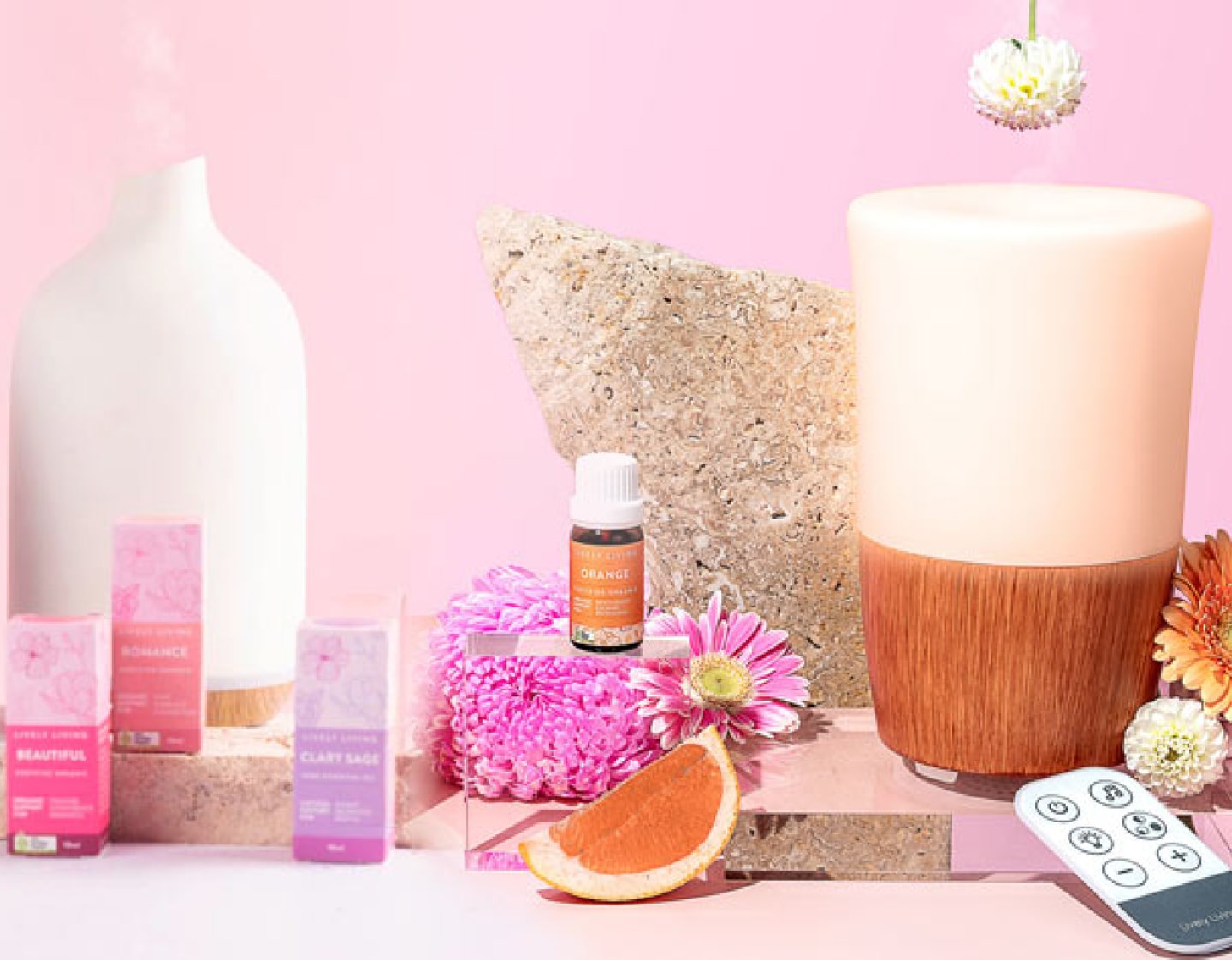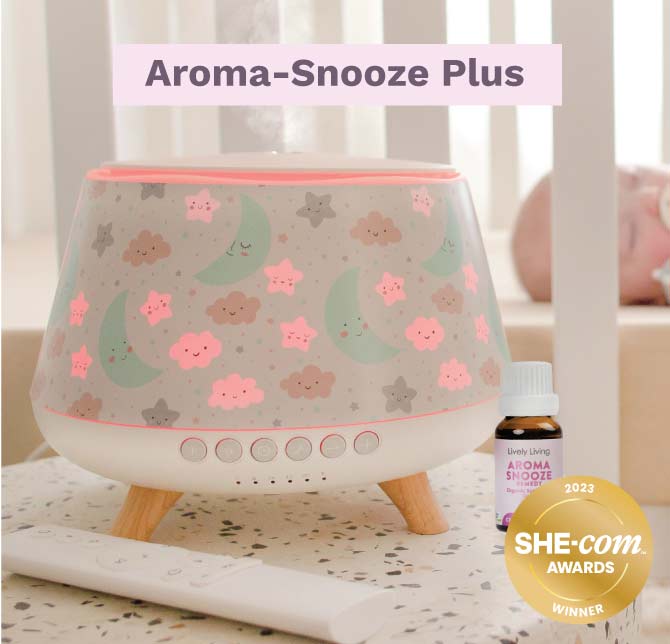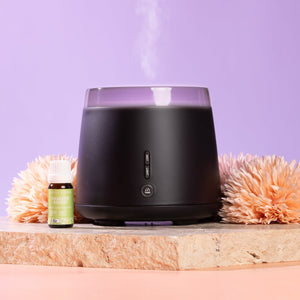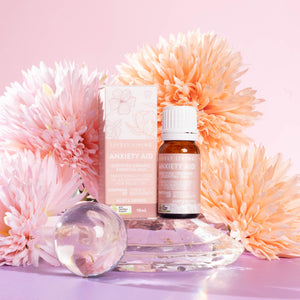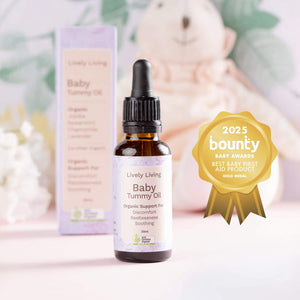Cedarwood Essential Oil Benefits: Boost Hair and Skin Health
You know that feeling when the day just won't quit? Your mind races, stress climbs, and finding a moment of calm feels impossible. Many of us are searching for natural ways to find balance in our busy lives, incorporating helpful natural ingredients into our routines.
That's where the warm, grounding aroma of cedarwood essential oil comes in. It’s not just a pleasant scent; it carries a history stretching back centuries. People are increasingly curious about the potential Cedarwood Essential Oil benefits.
From promoting relaxation to potentially helping your hair look its best, this versatile oil is worth exploring. You'll learn about the research, traditional uses, and practical ways to incorporate the many Cedarwood Essential Oil benefits into your routine and discover some fantastic oil benefits cedarwood oil offers.
Table Of Contents:
- What is Cedarwood Essential Oil?
- Cedarwood Essential Oil Benefits for Mind and Mood
- Cedarwood Oil Benefits for Physical Wellness
- Cedarwood Essential Oil for Healthy Hair and Scalp
- Other Practical Uses for Cedarwood Oil
- How to Use Cedarwood Essential Oil Safely
- FAQs about Cedarwood Essential Oil benefits
- Conclusion
What is Cedarwood Essential Oil?
Cedarwood essential oil is extracted from the wood, needles, leaves, or sometimes berries of various cedar trees. The primary extraction method is steam distilled, a process involving steam to vaporize the volatile aromatic compounds from the plant material. As the steam cools, it condenses back into liquid, separating the essential oil from the water.
You'll commonly find cedarwood oils derived from species like Cedrus atlantica (commonly known as Atlas Cedarwood or Cedarwood Atlas) and certain Juniperus species (like Virginia Cedarwood, Juniperus virginiana). While related and sharing a characteristic deep, warm, somewhat balsamic woodsy scent, different species yield oils with slightly varying chemical compositions and nuances in fragrance. Choosing high quality essential oils ensures you get the desired aromatic profile and constituents.
This isn't a new discovery; cedarwood has a rich history across cultures. The Ancient Egyptians famously used it in embalming, appreciating its preservative qualities and profound aroma. Learning about specific essential oils helps you understand the care taken in sourcing these potent plant extracts.
Modern analysis reveals key components in cedarwood oil, such as cedrol, cedrine, and thujopsene. These compounds are believed to contribute significantly to its potential therapeutic properties and distinct, comforting fragrance. It's these natural ingredients that provide the basis for its uses in aromatherapy and personal care.
TOP 5 Blends Incorporating Cedarwood
![]()
Cedarwood Essential Oil Benefits
For Mind and Mood
One of the most cherished aspects of cedarwood essential oil is its impact on emotional well-being. Its grounding scent is frequently used in aromatherapy to cultivate a sense of calm and stability. The aroma often evokes the feeling of walking through a quiet forest, steadying and peaceful, which can positively influence mental health.
Relaxation and Stress Reduction
Life often presents challenges, leading to accumulated stress. The calming properties associated with cedarwood oil may help ease these feelings. Research suggests that components like cedrol can have a soothing effect on the nervous system, potentially lessening tension and anxious feelings.
Imagine returning home after a stressful day. Using cedarwood essential oil in an oil diffuser could help transform your space into a sanctuary, allowing your mind to unwind. Some sources indicate it may help reduce mental hyperactivity and promote a state of peace.
Adding a few drops to an essential oil diffuser is a simple and effective method. Alternatively, place a drop on a tissue and inhale gently whenever you need a moment of tranquility throughout your day.
Promoting Better Sleep Quality
Difficulty falling or staying asleep is a common frustration. Cedarwood essential oil is often sought for its potential sedative qualities. Studies suggest its components, particularly cedrol, may impact restlessness and encourage relaxation, contributing to better sleep quality.
An animal study observed a noticeable sedative effect from cedrol inhalation [7]. While more extensive human research is needed, many people find the aroma inherently relaxing. A 2021 systematic review also supported aromatherapy, in general, for improving sleep.
Try diffusing cedarwood essential oil in your bedroom about 30 minutes before planning to sleep. Another method involves adding a well-diluted drop to your pillowcase. You might also consider exploring quality essential oil blends specifically formulated for sleep, which often feature cedarwood combined with oils like lavender oil.
Improving Focus and Clarity
Feeling mentally scattered or struggling to concentrate? The grounding aroma of cedarwood might assist in centering your thoughts and improving focus. Preliminary findings suggest it could potentially support attention and mental clarity.
An older study involving children with ADHD reported positive effects on behavior and focus following the inhalation of cedarwood oil [view study abstract]. Although this area requires more rigorous investigation, it points towards its potential contribution to cognitive function.
Diffusing cedarwood while working or studying could foster an atmosphere more conducive to concentration. Its ability to potentially quiet mental chatter makes it a useful companion during tasks demanding focus. This application showcases how cedarwood oil helps manage daily mental demands.
Cedarwood Oil Benefits
for Physical Wellness
Beyond influencing mood, cedarwood oil shows promise for supporting physical well-being too. Its natural compounds possess properties that might help address common physical concerns. Let's examine some potential health benefits of cedarwood oil for the body.
Supporting Respiratory Health
When coughs and congestion arise, finding natural support is often desired. Cedarwood essential oil is sometimes used to help maintain clear airways and support respiratory function. Its scent can feel decongesting, and some traditional uses suggest it may act as an expectorant, helping to loosen phlegm.


Lively Livings Sniffles and Chest Blend
The oil also possesses antispasmodic properties, which could potentially help ease coughing fits caused by muscle spasms in the respiratory tract. Diffusing the oil or using it carefully in steam inhalation (adding a drop to hot water and inhaling the steam) might provide respiratory comfort.
You could also prepare a diluted chest rub. Combine a few drops of cedarwood oil with a suitable carrier oil, such as coconut or jojoba oil, and gently massage it onto the chest area. Always ensure proper dilution, especially when applying to the skin.

Skin Care Potential: Addressing Acne and Irritation
Research indicates that cedarwood oil possesses anti-inflammatory and antibacterial properties [2]. This makes it an interesting candidate for various skin care applications, particularly for individuals dealing with troubled or oily complexions. These properties are central to many cedarwood oil benefits cedarwood oil offers for skin.
Some evidence suggests these characteristics could be beneficial for managing conditions like acne, potentially helping to combat breakouts and reduce inflammation. Consider it as a potential complementary approach within your existing skin care routine.
Its astringent qualities might also help in balancing sebum production, making it useful for oily skin types. Remember, it is crucial to always dilute cedarwood oil significantly with a carrier oil before applying it to the skin, particularly on the face (skin cedarwood application requires care). Performing a patch test first is essential to rule out sensitivity or irritation.

Recent reviews highlight the potential of essential oils, including those containing compounds found in cedarwood, for managing inflammatory skin conditions. You might explore adding a highly diluted drop to your shower gel for an overall soothing skin feel, akin to the general discussion around shower oil benefits. Comparing it to other oils, like tea tree oil, known for strong antibacterial action, cedarwood offers a potentially milder, woodsy alternative for certain skin applications.
Soothing Minor Aches and Discomfort
Occasional joint stiffness or muscle soreness can hinder daily activities. The anti-inflammatory potential of cedarwood oil might offer some comfort for minor aches. Research suggests certain compounds in the oil could help reduce inflammation sometimes associated with conditions like arthritis.
Try adding a few drops of diluted cedarwood oil to a carrier oil like sweet almond or grapeseed oil for a gentle massage on affected areas. Alternatively, mix 5-10 drops of cedarwood oil blend like Lively Livings Calm and Unwind pre-mixed with a tablespoon of carrier oil or Epsom salts, into warm bathwater for a relaxing and potentially soothing soak. General information about cedarwood oil applications often mentions its use for minor physical discomforts.
Antifungal Properties
Cedarwood oil also exhibits antifungal activity, adding another dimension to its profile. Studies suggest it could be effective against certain types of yeasts and fungi, including some implicated in oral health issues. Further investigation into its antibacterial activities is ongoing.
This antifungal property also connects to its potential benefits for scalp health. Common issues like dandruff often have a fungal component (Malassezia). Incorporating diluted cedarwood oil into hair care routines might help maintain a healthier scalp environment by addressing these microorganisms.
Cedarwood Essential Oil for Healthy Hair and Scalp
Many people explore essential oils seeking healthier, more vibrant hair and a balanced scalp. Cedarwood essential oil frequently appears in discussions surrounding natural hair care. Let's look at what the evidence suggests regarding cedarwood oil benefits for hair and scalp health.
Potential Aid for Hair Loss
Experiencing hair loss or thinning can be distressing. Cedarwood oil is among several natural essential oils investigated for potential benefits related to hair growth, especially concerning conditions like alopecia areata, an autoimmune disorder causing patchy hair loss.
An older but often-referenced study involved scalp massage using an essential oil blend containing cedarwood, thyme, rosemary essential oils, and lavender oil, diluted in carrier oils (jojoba and grapeseed). Participants with alopecia areata who used this blend showed significant improvement in hair growth compared to a control group using only carrier oils [6]. A 2015 study using aromatherapy yielded similar positive findings for hair regrowth.
It's important to recognize these studies utilized oil blends, making it challenging to attribute the results solely to cedarwood. A 2020 review concluded that while findings are promising, more rigorous, large-scale trials focusing specifically on essential oils for hair loss are needed. Therefore, while not a guaranteed cure, adding diluted cedarwood oil to your scalp care regimen might be a supportive measure worth exploring, especially if you are looking into oil benefits cedarwood might offer for hair.
Improving Scalp Conditions
A healthy scalp provides the foundation for strong, healthy hair. Cedarwood oil’s potential anti-inflammatory and antifungal properties may help address common scalp concerns like dandruff, flakiness, or itchiness. Creating a balanced scalp environment is key for optimal hair care.
Some anecdotal reports and traditional uses suggest it can help regulate sebum (oil) production on the scalp, benefiting both oily and dry scalp types. However, robust scientific evidence specifically validating cedarwood oil for treating these scalp conditions remains limited, as researchers often note the need for more focused studies.
You can easily add cedarwood oil to your routine: try mixing 3-5 drops directly into your regular bottle of shampoo or conditioner. Alternatively, create a nourishing scalp massage oil by combining a few drops of cedarwood essential oil with a suitable carrier oil like jojoba or argan oil, then gently massage it into your scalp 15-30 minutes before washing your hair.

Other Practical Uses for Cedarwood Oil
The utility of cedarwood oil extends beyond personal wellness and aromatherapy. Its potent, characteristic aroma and inherent properties make it suitable for practical household applications too. Consider it a versatile, natural tool derived from trees.
Natural Insect Repellent
Tired of dealing with bothersome insects? Cedarwood oil has a long-standing reputation as a natural insect repellent. The same compounds that contributed to its use by Ancient Egyptians for preservation seem to deter various pests – insects generally dislike its strong scent.
Modern research supports its effectiveness against several common pests. Studies indicate that cedrol, a major component in many cedarwood oils, actively repels ants and is lethal to ticks and clothes moth larvae [3]. It is even registered with the U.S. Environmental Protection Agency (EPA) as an active ingredient in some non-food use pesticide products [source needed - add link if available].
Other research shows it can help repel mosquitoes and ticks when formulated into topical applications, possibly enhanced when combined with other repellent oils like thyme or geranium [source needed - add link if available]. However, some evidence suggests its effects against ticks might diminish relatively quickly after application [learn about tick repellency].
For personal use, add a few drops of well-diluted cedarwood oil to unscented lotions or create a simple spray by combining it with water and a solubilizer (like witch hazel or a specific essential oil solubilizer). Around the house, placing cedar blocks or sachets containing cedar shavings in closets and drawers is a classic, passive method to deter moths from damaging fabrics.
Natural Deodorizer
The rich, lasting woodsy scent of cedarwood makes it an excellent natural deodorizer for homes and fabrics. It doesn't just cover up unpleasant odors; its compounds can help neutralize odor-causing molecules, leaving behind a clean, grounding, and fresh aroma. This quality is why it's a popular base note in many colognes, perfumes, and home fragrance oil products.
Use it to freshen stuffy rooms, combat lingering cooking smells, or neutralize odors in bathrooms or closets. Diffusing cedarwood essential oil using an essential oil diffuser is one of the simplest ways to improve your home's overall ambiance and air quality naturally.
To create a quick and easy room spray, combine 15-20 drops of cedarwood essential oil with about 4 ounces of distilled water (and optionally a teaspoon of vodka or witch hazel to help emulsify) in a small glass spray bottle. Shake the mixture well before each use and spritz lightly into the air, avoiding delicate surfaces.
Potential Diuretic Properties
This is among the lesser-known potential health applications associated with cedarwood oil components. Some preliminary research suggests that specific compounds within the oil, including cedrol and thujopsene, might possess diuretic properties [11]. This effect is not a primary use, and more research is needed.
Diuretics work by prompting the body to increase urine production and output. This action helps the body eliminate excess water and sodium. While this requires significantly more study and should absolutely not replace medical advice or prescribed treatments for conditions requiring diuretic medication, it remains an interesting aspect of the oil's complex chemical profile reported in scientific literature.
It's important to note that primary uses and studies focus elsewhere, such as relaxation, skin, and hair, not areas like managing multiple sclerosis, complex digestive health issues, or specific eye health conditions, where specialized medical care is essential.
How to Use Cedarwood Essential Oil Safely
Exploring the world of valuable essential oils can be beneficial, but prioritizing safety is fundamental. Cedarwood oil is generally recognized as safe for aromatic and properly diluted topical use by most adults. However, always remember that essential oils are highly concentrated plant extracts and must be handled with respect and care.
Before incorporating cedarwood oil extensively into your routine, it's prudent to consult with a qualified healthcare professional. This is particularly important if you have pre-existing health conditions, are pregnant or breastfeeding, or are taking medications. Researching the quality of essential oil you purchase is also vital.
Dilution is Key
Never apply undiluted cedarwood essential oil directly onto your skin. Direct application can cause significant skin irritation or sensitization. It must always be diluted with a suitable carrier oil before topical use.
Good choices for carrier oils include jojoba oil, fractionated coconut oil, sweet almond oil, grapeseed oil, or even olive oil. These oils help 'carry' the essential oil safely onto the skin and aid absorption. Proper dilution is essential for any skin cedarwood application.
A common dilution guideline for healthy adults is 1-2 drops of essential oil per teaspoon (5ml) of carrier oil for facial applications or for those with sensitive skin. For general body application, like massage, you might use a slightly higher concentration, such as 3-5 drops per teaspoon. Always start with the lowest effective dilution, especially when first using a new oil essential oil.
Perform a Patch Test
Before applying diluted cedarwood oil more broadly, conduct a simple patch test. Prepare a small amount of the diluted oil at the concentration you intend to use. Apply it to a small, discreet area of skin, like the inside of your forearm or elbow.
Cover the area with a bandage and leave it undisturbed for 24 to 48 hours. Check the site for any signs of reaction, such as redness, itching, burning, or blistering. If any irritation occurs, wash the area thoroughly and discontinue use; this indicates sensitivity, and you should avoid cedarwood oil topically.
Usage Methods Recap
Here is a table summarizing common and generally safe ways to use cedarwood oil:
| Method | How To | Safety Note |
|---|---|---|
| Diffusion | Add 3-5 drops to water in your essential oil diffuser. | Ensure good room ventilation. Avoid diffusing continuously for extended periods (e.g., more than 30-60 minutes at a time). |
| Topical (Massage/Skin) | Dilute 1-2 drops (face/sensitive) or 3-5 drops (body) per tsp carrier oil. Proper oil emulsions ensure even application. | Always patch test first. Avoid applying to broken, damaged, or diseased skin, and keep away from sensitive areas like eyes. |
| Inhalation | Place 1-2 drops on a tissue, cotton ball, or personal inhaler and inhale gently. You can also inhale directly from the bottle (without touching your nose). | Start slowly; deep, forceful inhalation isn't necessary or recommended. Discontinue if irritation occurs. |
| Bath | Mix 5-10 drops thoroughly with 1 tbsp carrier oil or 1/4 cup unscented Epsom salts *before* adding to warm bathwater. Agitate water to disperse. | Pre-mixing prevents droplets of concentrated oil essential from floating on the water surface, which could cause skin irritation. |
Important Precautions
Keep these critical points in mind for safe and responsible use of cedarwood essential oil emulsions and the neat oil:
- Do Not Ingest: Cedarwood essential oil should never be taken internally (swallowed). It is for external and aromatic use only.
- Allergies: Avoid cedarwood oil if you have a known allergy or sensitivity to cedar trees, cedar pollen, or related species (like junipers).
- Eyes & Mucous Membranes: Keep all essential oils, including cedarwood, away from the eyes and the delicate tissues inside the nose and ears. Accidental contact can cause significant irritation.
- Children & Pets: Exercise caution when using essential oils around children and pets. Consult a qualified aromatherapist or pediatrician for age-appropriate dilutions and safety guidelines for children. Consult a veterinarian knowledgeable in aromatherapy *before* using any essential oil products near or on animals, as many oils, including cedarwood, can be toxic to pets (especially cats). Always store essential oils securely out of reach of children and pets.
- Storage: Store cedarwood oil in a cool, dark place, tightly sealed in its original amber or dark glass bottle. This helps preserve its quality and prevents degradation from light and air exposure. Keep away from heat sources.
- Pregnancy & Breastfeeding: Consult a healthcare professional before using cedarwood oil during pregnancy or while breastfeeding due to insufficient safety data.
By adhering to these straightforward guidelines, you can confidently explore and enjoy the aromatic and potential therapeutic qualities of cedarwood oil responsibly. Look for high quality essential oils from trusted brands; sometimes featured products or offers available for a limited time may not reflect the best sourcing practices, so always verify.
FAQs about Cedarwood Essential Oil benefits
What are cedarwood essential oils good for?
Cedarwood essential oil is valued for its diverse range of potential applications. Key cedarwood oil benefits include promoting relaxation, reducing feelings of stress, improving sleep quality, supporting respiratory health, and serving as an effective natural insect repellent. It may also offer benefits for skin care (clarity, balancing oiliness) and hair care, particularly for maintaining a healthy scalp environment which supports hair growth.
What does cedar oil do spiritually?
In spiritual practices and aromatherapy, cedarwood oil is often associated with grounding, centering, and strengthening energy. Its earthy, stable woodsy scent is believed to quiet the mind, enhancing meditation, focus, and a connection to the present moment. It can foster feelings of stability, security, resilience, and inner strength, helping individuals feel more rooted and connected to the earth.
What are the disadvantages of cedarwood oil?
The primary disadvantages involve the potential for skin irritation or allergic reactions, especially if the oil is applied undiluted or if an individual has sensitivity; always perform a patch test. It must not be ingested due to potential toxicity. Caution is necessary during pregnancy and breastfeeding, and consultation with a healthcare professional is recommended. Furthermore, cedarwood oil can be toxic to pets, particularly cats, requiring careful use and storage in households with animals.
What bugs does cedarwood oil repel?
Cedarwood oil is recognized for repelling a variety of common insects. Both traditional use and scientific studies indicate its effectiveness against pests such as mosquitoes, fleas, ticks, clothes moths, and ants. The strong aroma, driven by components like cedrol, acts as a natural deterrent, making it a popular ingredient in natural insect repellent formulations and home pest control methods (like cedar blocks for closets).
Conclusion
Cedarwood essential oil offers a tangible connection to the grounding, stabilizing strength found in nature. Its characteristic warm, woodsy scent provides much more than just a pleasant fragrance. The spectrum of potential Cedarwood Essential Oil benefits discussed—from calming the mind and fostering restful sleep quality to supporting clearer skin and healthier hair, plus practical household uses—makes it a truly versatile addition to a natural wellness and personal care toolkit.
As with any potent botanical extract, understanding how to use cedarwood essential oil safely and appropriately is vital. Proper dilution with suitable carrier oils and conducting a patch test before widespread topical use are fundamental safety steps. Remembering to source high quality essential oil from reputable suppliers also contributes to a positive experience; read essential oil labels and supplier information carefully.
By incorporating cedarwood oil thoughtfully into your routines, you might discover a wonderful natural ally for cultivating more peace, balance, and well-being in your life. Exploring the full range of cedarwood oil benefits cedarwood offers can be a rewarding journey toward harnessing nature's gifts, whether you seek relaxation, better skin, healthier hair, or a bug-free home.
Lively Living is Australia's leading supplier of Certified Organic Essential Oils and Diffusers. We were the first to introduce cool mist diffuser technology into Australia in 2012.
Contact us for with any questions
Info@livelyliving.com.au

